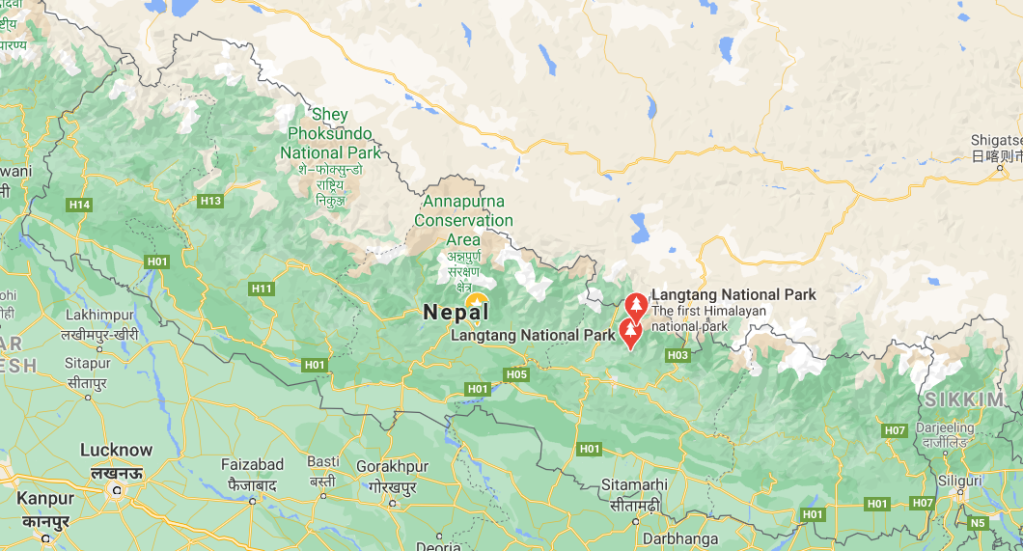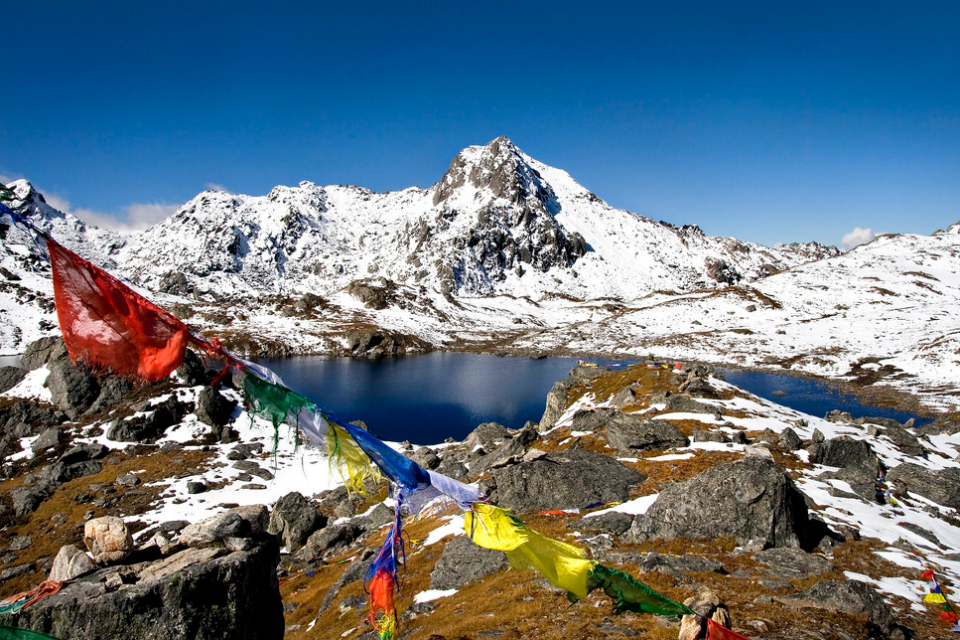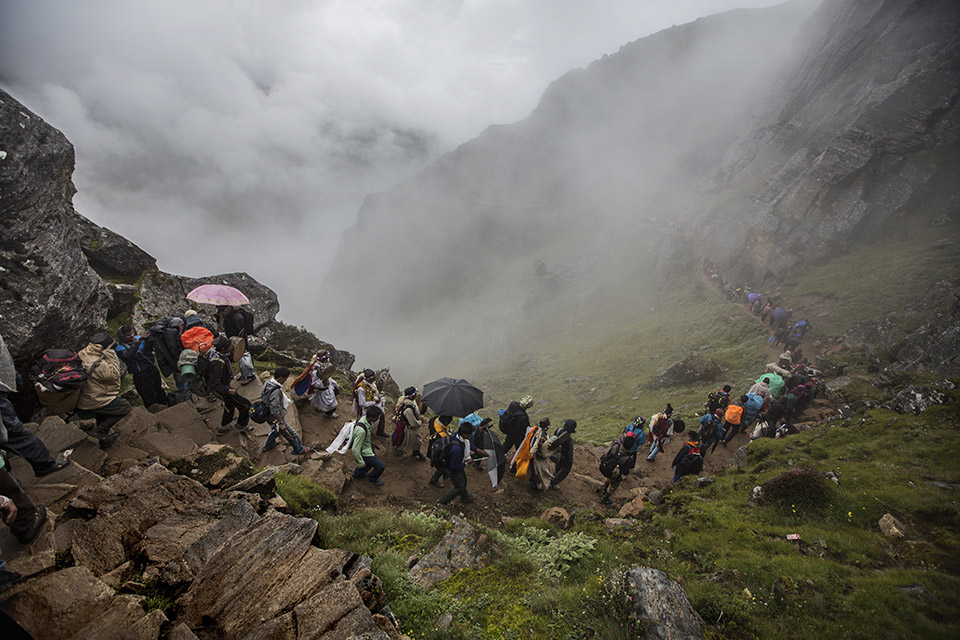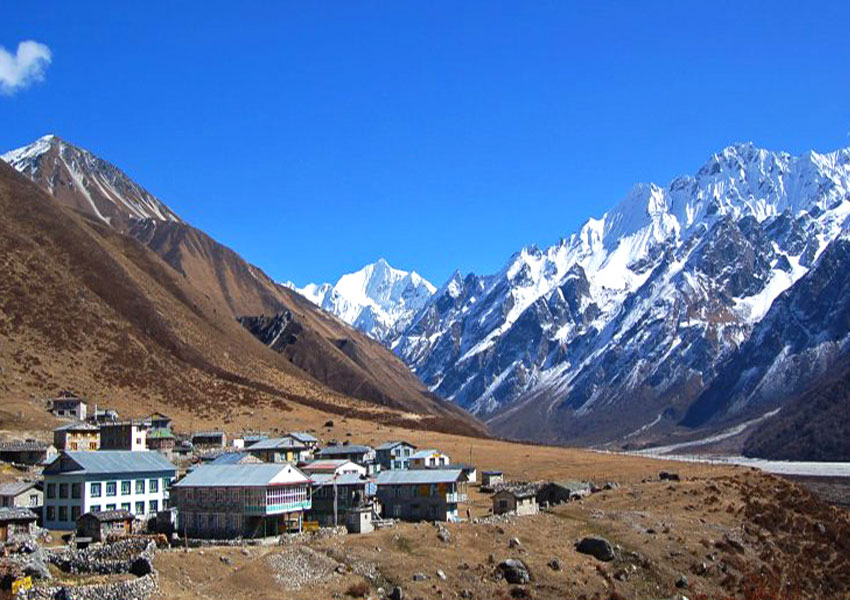Established in 1976 it is the first Himalayan National park of Nepal and covers area of 1710 km square with an approx elevation of 6500 m. It lies in the central Himalayan region of the country. The main reason for its establishment was to protect central Himalayan Eco-system.

Langtang national park is extremely rich in biodiversity. 46 species of mammals, around 340 species of birds, 30 species of fish , 70 species of butterfly, 10 species of spiders . It harbors about 1100 species of plants ( about 120 are medicinal plants). Some of the endangered species around the world includes: snow leopard, clouded leopard, musk deer and cat leopard are in the park.
Attractions of the park
Culturally, the park is also a mixed home for different ethnic groups. Around 3000 houses resides in and are depended on the natural resources of park for grazing livestock and firewood.
1. Holy lake Gosainkunda
Famous for religious belief and natural beauty.
It is the alpine freshwater lake located in Langtang National park with at an elevation of 4380m. It is also believed that lord Shiva thrust the mountain with his holy trident to extract water and cool his stinging throat after he had swallowed poison and after that it became a lake (Gosainkunda) . It has been widely recognized as a holy lake attracting thousands of pilgrims from Nepal and India.


2. Trekking: (Dhunche – Helambu)
You can also enjoy the scenic adventure by trekking in the area. The trek from Dhunche to Helambu.
On the first day : Starting from Dhunche, it involves long and steady climb to reach “Chandan Bari” at an elevation of 3200mtrs.
Second day : Your second day trek can lead you to another destination “Laurebinayak” at elevation of 3900m. After reaching there you can either choose to stay night there or climb forward to reach Gosainkunda lake which will take 2 more days and will be extreme adventurous due to low oxygen level and no signs and warnings.
Mostly people with breathing problems choose to stay at “Laurebinayak”. And it also offers close view of mountains, sunrise and beautiful sunset, red pandas and many more.

The trek dosen’t stop there. People can also choose to ascend forward from Gosainkunda lake upto elevation of 5500 meters.
A descend from Gosainkunda back to kathmandu will take about 4 days.
Accommodation during trek:

During the trek from Dhunche to Helambu there are total of 14 hotels and few tea spots where you can grab some snacks for your trip ahead. But travelling during the trekking seasons chances of staying at hotels are slim so, be prepared with tents. But if you are travelling during the religious season you dont really have to worry about accommodation because there are temporary huts built for pilgrims and you can join the community.
Safety advice and tips!
Climbing an elevation after 3500m can be life threatning for people who can not cope with altitude sickness.Never hike alone. Hiring local guides is strongly recommended on Ganja La (5120m) trek and on Lauribina La (4600m) during winter.Carry first aid kit with you as there are no health care facilities up there. Telephone facilities are available only at Dhunche and rarely available at Helambu.
Next blog: Jomsom and Muktinath
